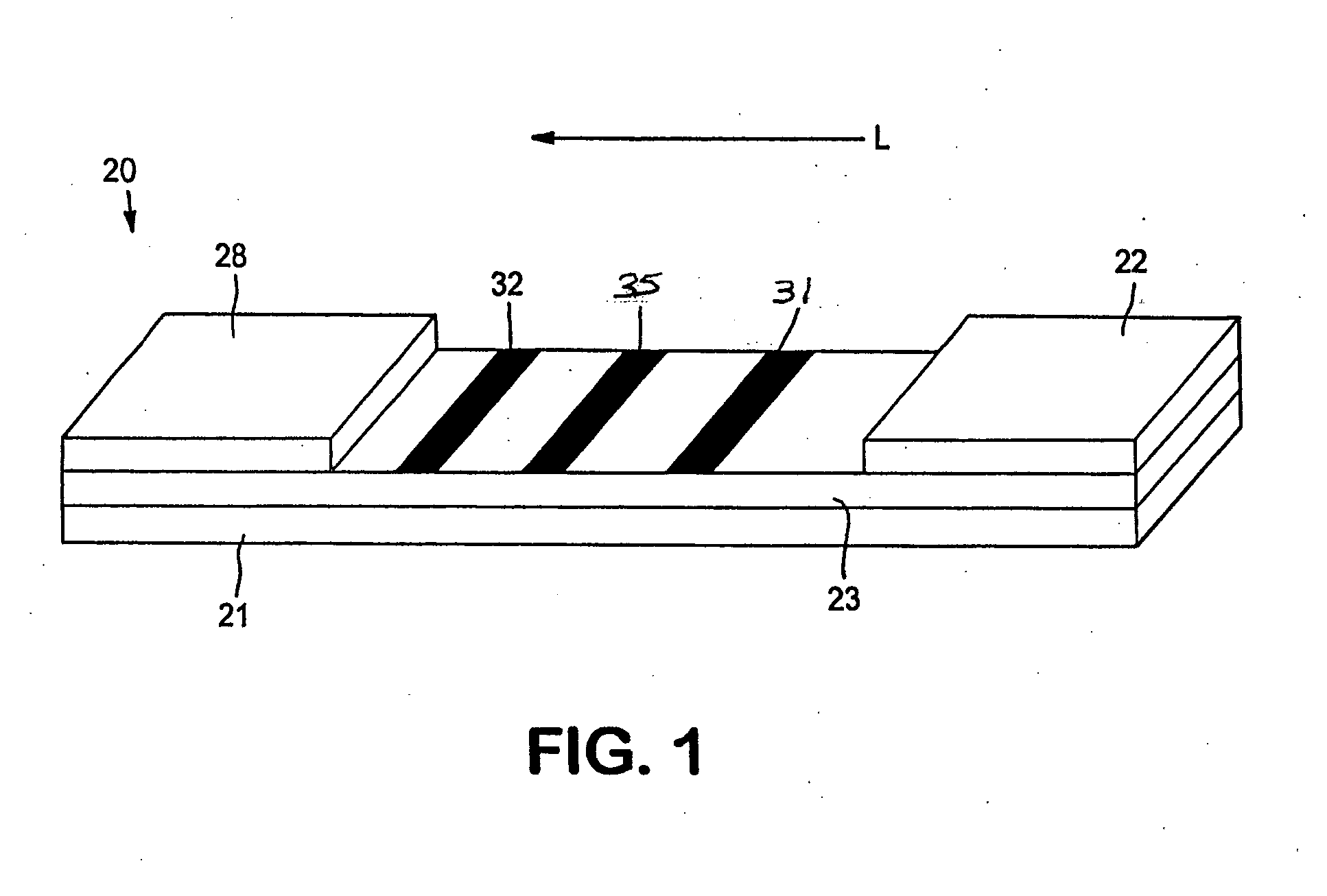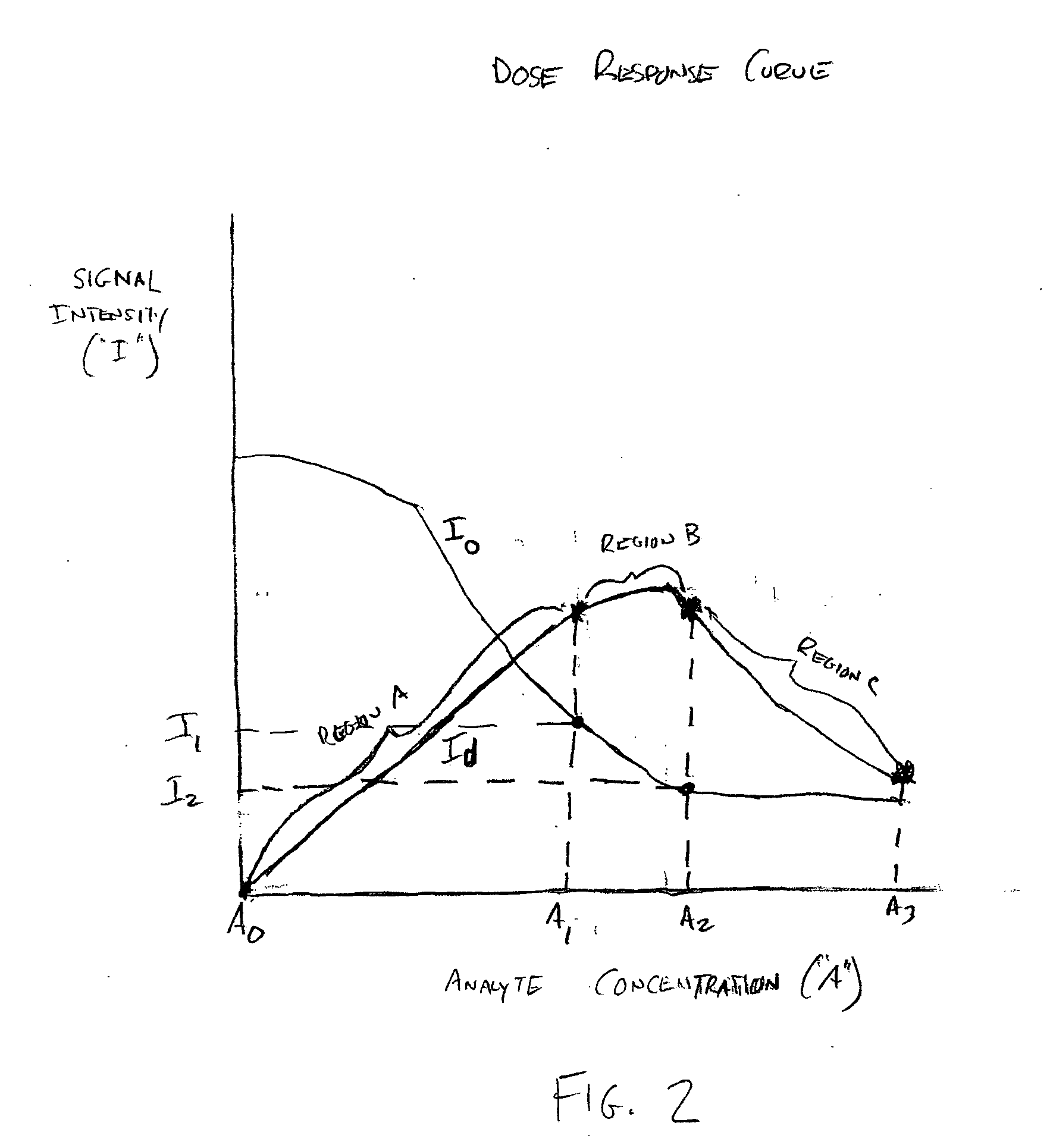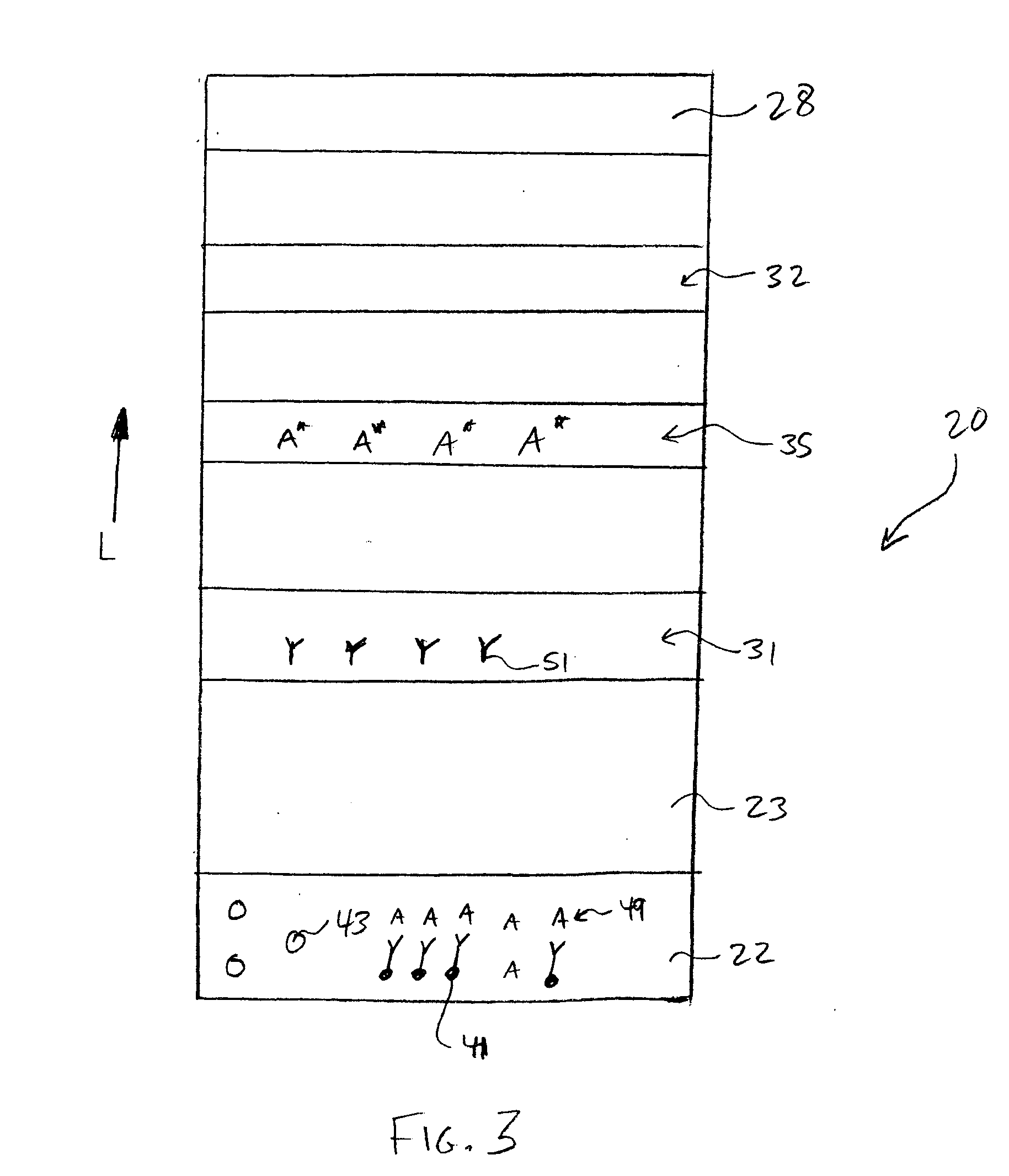Assay devices having detection capabilities within the hook effect region
a technology of detection capability and hook effect, which is applied in the direction of measurement device, biological material analysis, instruments, etc., can solve the problems of inability to detect and many conventional lateral flow assays encounter significant inaccuracy
- Summary
- Abstract
- Description
- Claims
- Application Information
AI Technical Summary
Benefits of technology
Problems solved by technology
Method used
Image
Examples
example 1
[0076] The ability to form a lateral flow assay device was demonstrated. A nitrocellulose porous membrane (HF 120 from Millipore, Inc.) having a length of approximately 30 centimeters was laminated onto supporting cards. Monoclonal antibody for C-reactive protein was immobilized on the porous membrane to form a detection zone. The antibody was obtained from BiosPacific, Inc. (Catalog #A58040136P) and had a concentration of 1 milligram per milliliter. CRP antigen was immobilized on the porous membrane to form an indicator zone. The antigen was obtained from Biogenesis Inc. of Kingston, N.H., and had a concentration of 2.78 milligrams per milliliter. Goldline™ (a polylysine solution obtained from British Biocell International) was striped onto the membrane to form a control zone. The indicator zone was positioned between the detection zone and the control zone. A cellulose wicking pad (Millipore Co.) was laminated with one end (closer to the control zone) of the membrane. The membrane...
example 2
[0078] Lateral flow devices were formed as described in Example 1, except that 2.23 milligrams per milliliter of goat anti mouse IgG (Fc) was used to form the control zone.
example 3
[0079] The ability to form a lateral flow assay device was demonstrated. A nitrocellulose porous membrane (HF 120 from Millipore, Inc.) having a length of approximately 30 centimeters was laminated onto supporting cards. Monoclonal antibody for C-reactive protein (BiosPacific, Inc., Catalog #A58040136P) in 0.1% trehalose aqueous solution was immobilized on the porous membrane to form a detection zone. CRP antigen was immobilized on the porous membrane to form an indicator zone. The antigen was obtained from Biogenesis Inc. of Kingston, N.H., and had a concentration of 2.78 milligrams per milliliter. Goat anti alkaline phosphatase (2.5 milligrams per milliliter, obtained from Fitzgerald Industries International, Inc. of Concord, Mass.) was striped onto the membrane to form a calibration zone. The indicator zone was positioned between the detection zone and the calibration zone. A cellulose wicking pad (Millipore Co.) was laminated with one end (closer to the control zone) of the memb...
PUM
 Login to View More
Login to View More Abstract
Description
Claims
Application Information
 Login to View More
Login to View More - R&D
- Intellectual Property
- Life Sciences
- Materials
- Tech Scout
- Unparalleled Data Quality
- Higher Quality Content
- 60% Fewer Hallucinations
Browse by: Latest US Patents, China's latest patents, Technical Efficacy Thesaurus, Application Domain, Technology Topic, Popular Technical Reports.
© 2025 PatSnap. All rights reserved.Legal|Privacy policy|Modern Slavery Act Transparency Statement|Sitemap|About US| Contact US: help@patsnap.com



